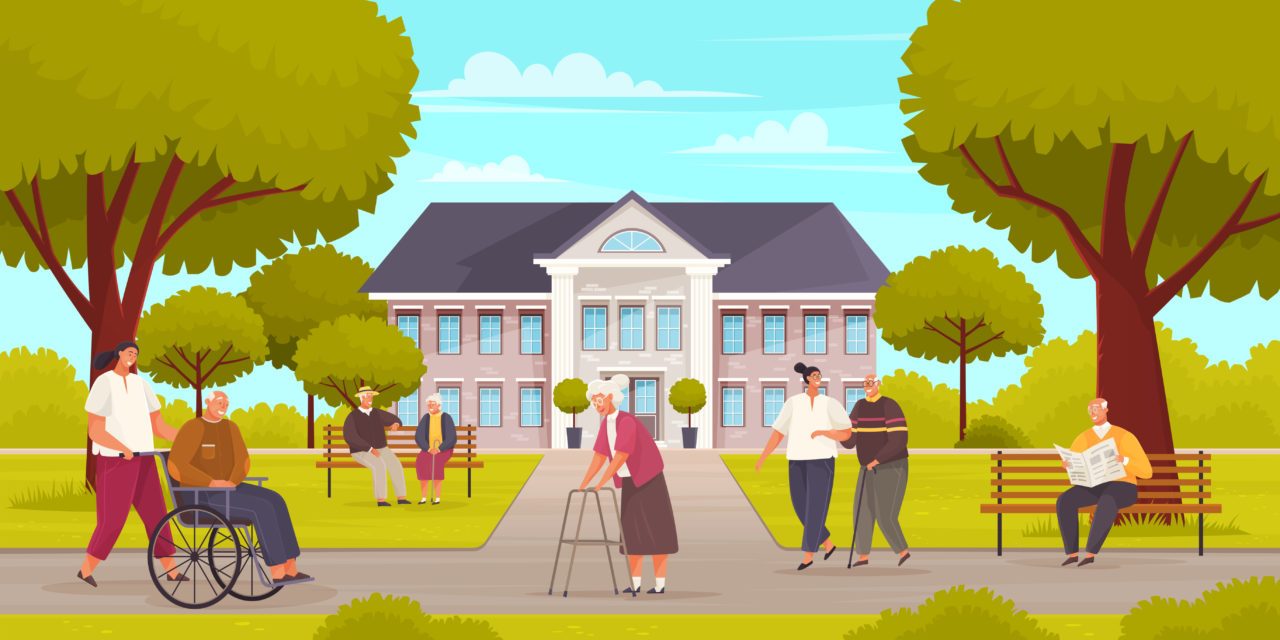This is a frightening and confusing time for residents of long-term care facilities and their families as New York’s Department of Health has severely restricted visitation in these facilities. This is a brief guide to visitation rights in long term care facilities for residents, families and advocates.
Visitation Allowed in Long Term Care Facilities When:
- No new COVID-19 cases in the Nursing Home in 14 days
- There is adequate staffing in the Nursing Home to accommodate the special visit requirements
- There is adequate testing of residents (all residents have been tested)
- Visitors present a negative COVID-19 test within 7 days of the visit and pass screening questions – except for end of life and compassionate care visits
- All visitors and residents wear face masks or face coverings
- Social distancing is maintained (6 feet apart)
- Hand sanitizer is available
- Only two visitors are allowed per resident at any one time
- The number of visitors does not exceed 10% of resident census at any time
- Visitors are over age 18
Exceptions: Visitation permitted for cases when there is a pending terminal illness, or “end of life” situations and a determination that “compassionate care” is needed. (Defined above)
What is a Red, Orange and Yellow Zone?
These are areas demonstrating substantial COVID-19 spread, Red being the highest concentration, then Orange, then Yellow. You can look up COVID-19 hot spot zones by address here: https://forward.ny.gov/

No visitation when Nursing Home is in a “Red Zone” (defined below) except for:
- Compassionate Care
- End of Life/Hospice
- Medically or clinically necessary (i.e. visitor is essential to the care of the patient)
- Essential companions to individuals with cognitive impairments, including dementia

No visitation in an Orange Zone if:
Staff member or resident in facility has tested COVID-19 in the last 14 days except for:
- Compassionate Care
- End of Life/Hospice
- Medically or clinically necessary
- Necessary legal representatives
- Essential companions to individuals with cognitive impairments, including dementia
Where to Visit?
- Outdoors (weather permitting)
- Indoors if the area is well-ventilated: no more than 10 people visiting the facility, face masks required, and social distance is maintained. However, not in the resident’s room unless the resident is bed-bound, is an end of life case, pediatric case, or the resident is in a dedicated unit.
Virtual Visits
Facilities are encouraged to provide all available options for virtual family visits! Contact resident’s social work, or recreation staff or designated administrative staff to set up times to FaceTime, Skype, Zoom or have any other form of virtual interaction with your loved one.
What is a Compassionate Care Visit?
While not exclusively confined to end-of-life situations, it can and will include visits in imminent end of life situations. For example, a compassionate care visit may be for a resident who is experiencing trauma, such as the death of a family member or friend, a sudden change in environment, and other situations where the mental well-being of a resident requires an in-person visit. Visits under these circumstances must include screenings for COVID-19 symptoms, social distancing, hand hygiene, and both residents and visitors wearing a face covering for the entire visit.
The Future of Visitation
If the Nursing Home does not satisfy all of the safety conditions or there is an uptick in the number of positive COVID-19 cases called “micro clusters,” such as the declaration of red or orange zones in the local area or other legitimate infection control concerns, visitation may be limited again. On October 23, 2020 an Executive Order established that all congregate care visitations in red zones were suspended. The Order listed compassion care exceptions as above or visits for: medical/clinical necessary care, involving minors, necessary and essential companions for person with intellectual disabilities, and necessary legal representatives. Orange zone rules are more flexible, but if a staff member or resident of a facility has tested positive for COVID in the last 14 days, visitation will be suspended with the same exceptions stated above.
Call for Help
- Request a meeting with the Director of Recreation and the Administrator of the Nursing Home to discuss access to the resident.
- If appropriate, request a compassionate care visit(s). If refused, request and arrange a care plan meeting that is attended by an interdisciplinary team consisting of the resident’s social worker, nurse, attending physician, dietician, director of recreation, or director of therapy to establish the benefit of this type of visit.
- If the Resident’s facility is in a Red or Orange Zone and you believe the visit is medically or clinically necessary (i.e. essential for the care of the patient), request and arrange a meeting with the Resident’s attending physician, social worker, nurse or Administrator to advocate for visitation.
- Contact the local Ombudsman office for your locality.
- Register a complaint (888-201-4563) with the NYS Department of Health’s Nursing Home Complaint Hotline.

The Ombudsman Program is an effective advocate and resource for older adults and people with disabilities who live in nursing homes, among other settings. Ombudsmen help residents understand and exercise their rights to good care in an environment that promotes and protects their dignity and quality of life. Phone: 855-582-6769


